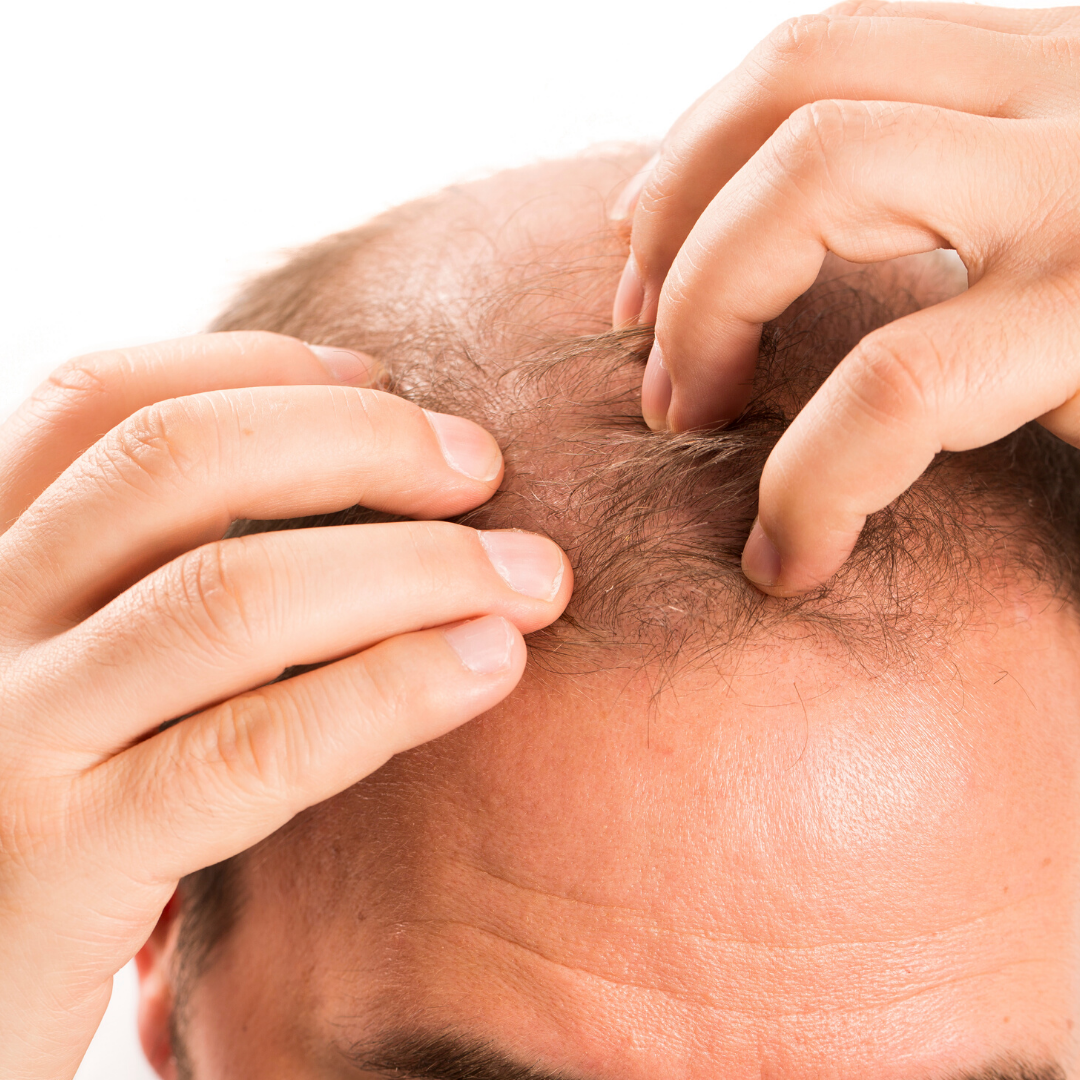S.A.F.E.R. hair transplant
S.A.F.E.R. hair transplant, performed in our Clinic in Cracow, is a surgical procedure consisting in filling hair loss in the areas that have completely lost hair or where the hair has thinned.
S.A.F.E.R. (Suction Assisted Follicular Extraction and Re-implantation) is a high-quality device that enables fast and minimally invasive hair transplantation. The device allows for the collection and transplantation of a graft, i.e., a tuft of hair (usually 2-3 hairs). The risk of damaging the collected hair follicles and the adjacent follicles is minimal. The transplanted hair retains its genetic properties, i.e., it is not sensitive to androgens and is not subject to the process of androgenic alopecia.
The S.A.F.E.R. hair transplant method enables the repeatability of treatments, i.e., the hair transplant can be repeated as the baldness progresses. The hair transplantation using the S.A.F.E.R. provides lasting, natural effects without the risk of transplant rejection and a lengthy recovery period. S.A.F.E.R. is a good solution for patients who have had a STRIP or FUE transplant before.
 M
M
Advantages of hair transplantation with the S.A.F.E.R.
- The lowest invasiveness for the patient among the currently used methods,
- Very short recovery time,
- The possibility of postoperative complications is minimal,
- Pain appearing after the procedure is short-term, mildly intense,
- There is usually no scarring, and if it does appear, they are tiny scars 0.8-0.9 mm in diameter,
- Repeatable treatment,
- The treatment has no limit in the professional activity.
Where can you make it
- Medistica Medycyna + Piękno
How does the S.A.F.E.R. hair transplant at Medistica Medicine + Beauty Cracow procedure work?
- The recipient area (where grafts are collected) is the skin of the occipital region. A graft is a tuft of hair, usually 2-3 follicles, but it can also be just 1 hair. The amount of hair in the graft is a unique feature.
- The scalp (recipient area and transplantation area) is anesthetized with a lidocaine solution (intradermal injections) – local anesthesia.
- The grafts are taken with a special die, which enters the skin to a depth of 1.5 – 2 mm. A hole with a diameter of 0.8 – 0.9 mm is formed (depending on the diameter of the instrument used). The die cuts through the paranasal muscle that holds the hair follicles in the skin, then the grafts are pulled from the skin using compressed air. The recipient area is bleeding, and then it becomes crusted. After the hair is collected, minor scars may remain, but usually, the skin heals without leaving any signs of scarring. After the hair is collected, hair thinning may appear in the recipient area.
- If necessary, a dressing is applied to the recipient area.
- In the transplant area, micro-punctures are made into which the grafts are inserted using an appropriate probe and pressure. After the treatment, the skin is covered with small scabs.
- The scabs remain on the scalp (recipient and graft area) for about 1-2 weeks.
The recovery time is about 2 weeks. The procedure is performed in sterile conditions, and disposable drains are used.

Frequently Asked Questions
Is the hair transplant procedure painful, and does the head hurt after the procedure?
The procedure is performed under local anesthesia, i.e., the skin is anesthetized with the injections with lidocaine solution. A short-term headache may occur after the procedure, but it is mild. It resolves spontaneously within 1-2 hours. For example, paracetamol can be taken for pain management.
Is there swelling after S.A.F.E.R.?
Forehead swelling may appear 1-2 days after the treatment. It can be very severe, especially when the hair is transplanted into the frontal area and when a large amount of hair is transplanted. It usually clears up within a few hours. In case of swelling, it is best to use ice packs, e.g., ice-pack.
Can I drive a car after the treatment?
Of course. The anesthesia used for the procedure is local and wears off quickly. Anesthesia does not limit the ability to drive a car.
When is it possible to return to work after the treatment?
The treatment does not limit professional or social activity. After the procedure, you can go to work the next day. Of course, there are scabs on the scalp that last for about a week.
How does the hair look like after the S.A.F.E.R.?
A few days after the treatment, it can be noticed that hair is falling out together with the scabs. Do not panic. This is normal. The transplanted hair growth is observed at the site of the transplant. After several or several dozen weeks, the transplanted hair falls out. Do not panic. This is normal. Then new hair appears in the transplant area. Initially, it can be very fine, thin. It takes about a year to obtain a satisfactory hair appearance. Such a long time is associated with the life cycle of a hair. For normal hair to grow, the hair follicle must produce several generations of hair that will fall out and be replaced by final hair.
How many hairs are transplanted during one treatment, and how long does the treatment take?
The duration of the procedure depends on the amount of the transplanted hair but usually takes 3-4 hours. Up to 1500 grafts can be transplanted during one procedure. The doctor determines the amount during the qualifying visit. Of course, this is an approximate amount. Usually, more grafts are transplanted than agreed, but the cost of the procedure does not change.
A suggested, androgen-resistant number of grafts for transplantation, e.g.:
Receding hairline:
– small 200-300
– medium 300-400
– large 400-600
Tonsure (top of head):
– small 200-400
– medium 500-700
– large 700-900
How effective is the treatment?
The effectiveness of the treatment is almost 100%. Very rarely, the transplanted hair is discarded. During the hair collection process, the possibility of hair damage is minimal, which is why the results of the hair transplant are so satisfying.
Will the transplanted hair fall out?
The cause of androgenic hair loss from the temporal, frontal, and top of the head regions is that hair growth is regulated by androgens (male sex hormones) in this area. Such a phenomenon occurs in men and women. The hair for transplantation is taken from the occipital region of the head. They are androgen-resistant hair. They retain these features even though they will be moved to another place. Therefore they do not fall out despite the patient’s tendency to androgenic alopecia.
- androgenic alopecia in men
- androgenic alopecia in women – stabilized androgen levels
- hair loss caused by: trauma, surgery, medical condition (after recovery)
- advanced diabetes
- unregulated blood pressure
- inflammatory diseases of the scalp
- alopecia areata
- blood coagulation disorders
- allergy to local anesthetics
- very young people prematurely affected by androgenetic alopecia
- previous heart attack
- physical exhaustion
Price list
Expand-
Hair transplant S.A.F.E.R.
- Consultation for hair transplant (amount deducted from the price of the procedure) 250 zł
- Hair transplant (1 graft) 11,50 zł
- Hair transplant (min. 300 grafts) 3450 zł
* Prices above 800 grafts are negotiable




